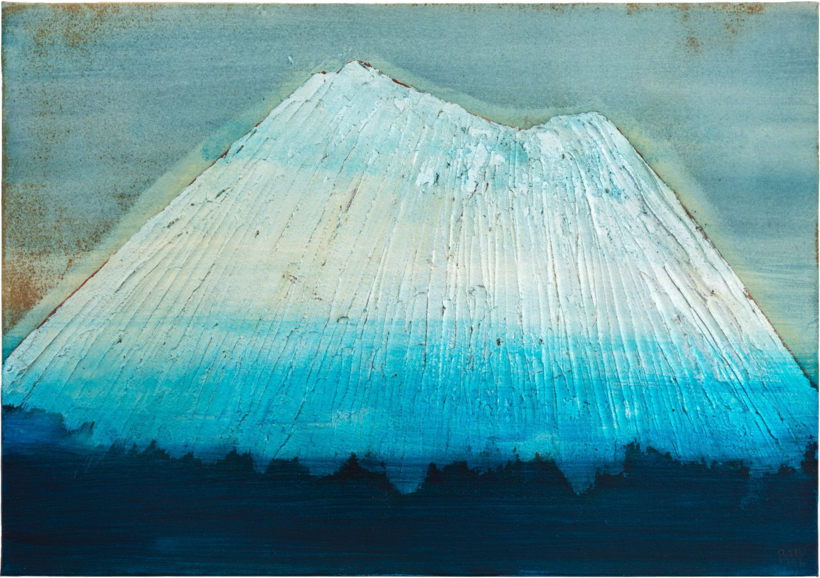Blessed be the artist who keeps a logbook, full of her impressions of a Christian Women’s Association cruise in the Far North of Norway. Anna-Eva Bergman’s talent as a caricaturist finds literary form with her description of “a swarm of bosoms decorated with small or large gold or silver crosses, hanging from the end of a long chain.” Bergman also grumbles about the boat’s bad food and bad lodgings. But all these disappointments evaporate on June 28, 1950, when Bergman stands on deck and witnesses the Arctic phenomenon of the midnight sun for the first time.
“The mountains seem[ed] transparent, nothing had depth anymore,” she writes. “Everything was like a vision, a possibility not yet realized. If you want to paint this, you have to find the expression that suggests the atmosphere, the effect of the colors. Nothing naturalistic.”

Bergman’s art would never be the same again. At the age of 31, the Norwegian painter turned her back on caricature and the human figure in favor of stones, mountains, stelae, water, air—natural forms feeling their way into abstraction, becoming something otherworldly and telluric.
“It was at this moment Bergman understood that the art she wanted to materialize were these forms that had not yet been created—almost but not quite,” says the French art historian Thomas Schlesser. “Her art would become an art of genesis.” Schlesser, who directs the Hartung-Bergman Foundation, in Antibes on the French Riviera, is curating the first Bergman survey to be held in the U.S. “Anna-Eva Bergman: Revelation,” opening at Perrotin in New York on September 7, gathers nearly 60 paintings, drawings, and prints from across her five-decade career.
The exhibition follows a significant Bergman retrospective at the Museo Reina Sofía, in Madrid, which ended last year. Bergman’s work will also be the subject of two retrospectives in 2023, at the Museum of Modern Art in Paris and the National Museum in Oslo. Schlesser, who has written a biography of Bergman that will be published in France this November, talks of “an historic revenge,” regarding this newfound interest for Bergman’s oeuvre. The artist, who died in 1987 at the age of 78, spent many years toiling in the shadow of her husband, the German-French abstract painter Hans Hartung.

Bergman’s use of silver and gold leaf in many of her paintings was met with utter disdain when she exhibited in Norway at the beginning of the 1950s. “The curators of the exhibition covered her paintings with chalk because they thought it was impossible to make paintings with gold and silver leaf,” Schlesser says. “She spent her whole life struggling to be accepted by her native country.” Indeed, parallels can be drawn with another female Scandinavian abstract artist, Sweden’s Hilma af Klint (1862–1944), whose recognition as a truly innovative and original artist was also of a posthumous nature.
“Both artists had an almost mystical approach to creating art that had religious connotations,” Schlesser says. “One of the first phrases that Bergman wrote when she started her personal revolution to create abstract paintings was that she wanted people to experience the feeling of entering a cathedral when they looked at her art.” The hope is that now it will finally get to be appreciated by a large congregation. —Tobias Grey
“Anna-Eva Bergman: Revelation” will be on view at Perrotin in New York from September 7 through October 22
Tobias Grey is a Gloucestershire, U.K.–based writer and critic, focused on art, film, and books


 Discover
Discover